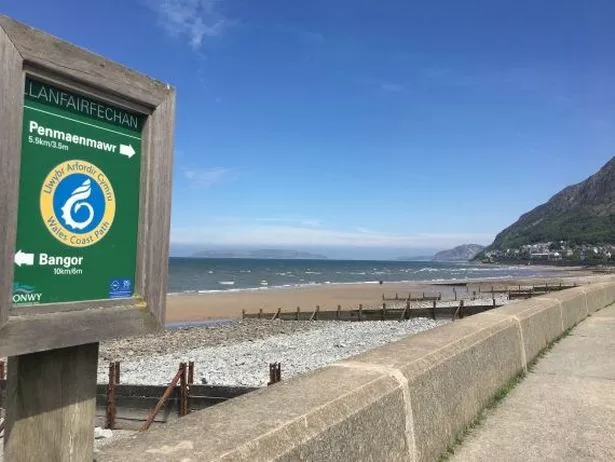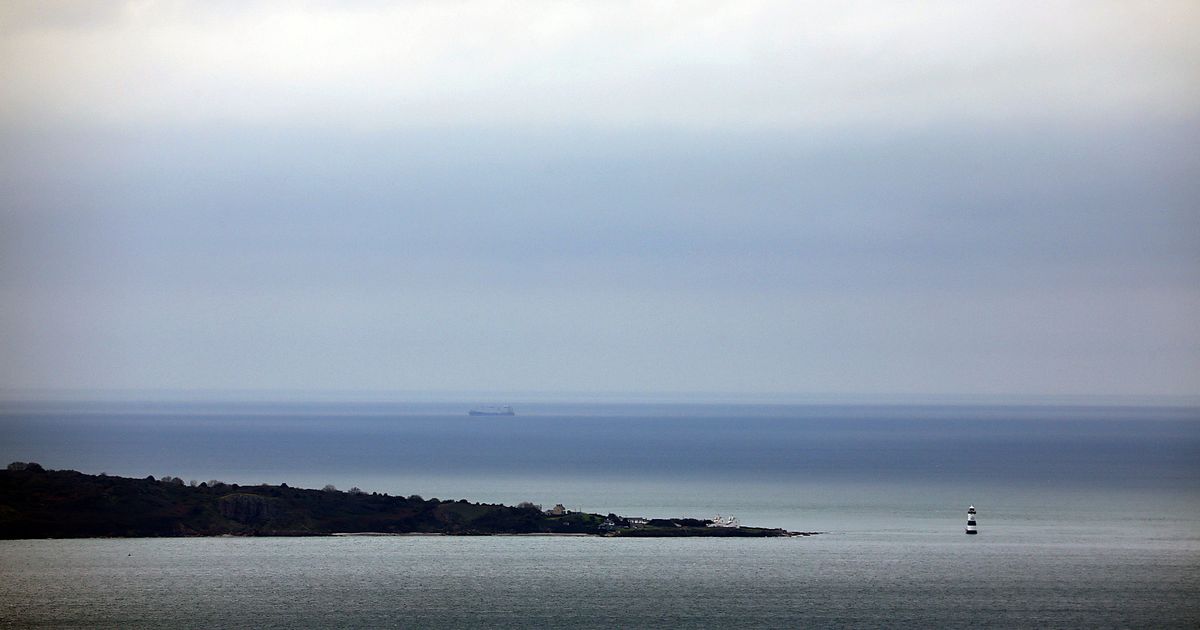Sewage discharges are rising everywhere and Wales’ biggest water company, Dwr Cymru, had the most discharges of any water firm View of Penmon Point and lighthouse on Anglesey viewed from Llanfairfechan.(Image: Ian Cooper/North Wales Live)
View of Penmon Point and lighthouse on Anglesey viewed from Llanfairfechan.(Image: Ian Cooper/North Wales Live)
Dŵr Cymru released sewage into water 118,276 times in 2024, an average of more than one sewage discharge every five minutes – the highest number of confirmed discharges of any water company in the UK. In total, Dŵr Cymru Welsh Water discharged sewage for 968,340 hours last year.
The not-for-profit’s target to reduce sewage discharges has been criticised by a water quality campaign group as “lacking ambition”. Surfers Against Sewage (SAS) say the target to reduce sewage discharges to 30 incidents per combined sewer overflow by 2030, is significantly lower than the average target of 21 set by other UK water providers.
Surfers Against Sewage say that shows a lack of ambition and is “truly unacceptable” and will mean Dŵr Cymru is “constantly playing catch-up, with water users in Wales likely remaining at higher risk than those of other regions, up to 2030 and beyond”. It says that regulators in Wales have failed to hold Dŵr Cymru to account.
They say the total figures for 2024, released in its annual report, put Dŵr Cymru top of the list, discharges this year “looks to be no different” as sewage was released somewhere in Wales every day across January and February 2025. In just the first two months of 2025, SAS recorded 8,432 discharges across the country. . For our free daily briefing on the biggest issues facing the nation, sign up to the Wales Matters newsletter here
Figures from Surfers Against Sewage show the number of sewage discharges in 2024 was up on 2023 for Dŵr Cymru, up from 110,147 to 118,276.
Dŵr Cymru says it has over 2,300 storm overflows in Wales, a very high number of assets for a relatively small population and that because Wales is on the west of the UK, it has some of the highest levels of rainfall. “The more rainfall, the more times the sewer system is at capacity and will spill,” a spokeswoman said.
Polling released by the charity alongside its annual water quality report show public trust in the water industry is low, with less than a quarter (24%) of people agreeing that their bill payments have been used responsibly.
This year’s report highlights that in 2024 alone, SAS received 1,853 sickness reports from UK water users. Cumulatively, the number of sick days likely linked to sewage pollution amounts to nine years’ worth, with an estimated hit to the UK economy of £493,200. It’s important to note that these figures only cover sickness cases directly reported to SAS, and that the true scale of sickness from poor water quality is likely to be far higher.
The top 10 Welsh locations with the most discharges
Location
Sewage discharges
1
Llanfairfechan, Conwy
629
2
Penarth Beach, Vale of Glamorgan
559
3
Swansea Bay, Swansea
493
4
River Usk
468
5
Llyn Padarn, Gwynedd
417
6
Llandudno west shore , Conwy
353
7
Llandanwg , Gwynedd
346
8
Whitmore Bay, Barry Island
321
9
Jacksons Bay, Barry Island
291
10
River Dee
277
CEO of Surfers Against Sewage Giles Bristow said: “The sheer lack of ambition shown by Dŵr Cymru Welsh Water to reduce pollution shows they have no shame over the catastrophic levels of sewage they are spewing into Wales’ beautiful coastline, rivers and lakes. With such clear mismanagement, it’s no wonder that less than a quarter of people believe that their water supplier has used their bill payments responsibly.
“Welsh waters have been polluted for far too long and the whole system is to blame. Dŵr Cyrmu Welsh Water has been polluting regularly. A shambolic regulator has let them get away with it and the government is asleep at the wheel. It’s time for change. With an election rapidly approaching, politicians in Wales need to stop stalling and start acting to get a grip on this broken system.”
Ian Gowan, from Kidderminster, contracted an infection while on holiday in Wales. Speaking on Radio Wales this morning, he said in April 2023 he was walking on Aberystwyth beach with his dog but lost his balance and fell into the sea.
He couldn’t initially get up but said “someone walking past helped me but I’d ingested about four mouthfuls of water into my lungs”.
“I didn’t think anything of it, carried on with our holiday, and two weeks later I developed a chest infection.
“I went to my GP and was given antibiotics. It did the trick, but it came back. I went back to my GP and was given more antibiotics, after the fifth time the GP listened to my chest and said there was something wrong with my left lung. I had to have an urgent X ray and they found I had a soft mass in my lung, I thought it was going to be cancer, thank goodness it wasn’t. The lump was the size of a tennis ball, full of puss and nasty stuff like that, as a result I developed sepsis.
 Llanfairfechan in Conwy came top of the list in Wales for sewage discharges in 2024(Image: Visit Wales)
Llanfairfechan in Conwy came top of the list in Wales for sewage discharges in 2024(Image: Visit Wales)
“I went to see a respiratory specialist and within an hour, I was on HDU in Worcester Royal Infirmary on IV antibiotics. I stayed in there for five days, I was discharged home, and I was allowed home and my wife carried on giving me the intravenous antibiotics for 10 days after that. Then it was a month on oral antibiotics.
“When I went back to the consultant, thank goodness the abscess has gone but it has left some permanent scarring on my lungs, which is permanent so now unfortunately I can’t take a deep breath. It’s bad for me because I used to play in a brass band, and I played the tuba, but I can’t push the air through any more, so I had to stop that. And I lost four weeks wages beacuse I wasn’t paid.”
He was told by his consultant, “something has got into your lungs to cause this and the only thing it could have been was the sea water in Aberystwyth”.
A Dwr Cymru spokeswoman said: “Both England and Wales are working to tackle issues surrounding storm overflows, with a slightly different focus. Wales is focused on tackling storm overflows that cause the most environmental harm first. In England, the focus is on reducing the numbers of spills.
“We operate over 2,300 storm overflows in Wales as we have a very high number of assets for a relatively small population.
“Many of our rural communities are served by smaller sewerage networks and storm overflows, which are essential to ensure networks do not become overwhelmed and flood properties. A spill from a very small rural overflow in Wales counts the same as a huge storm overflow in a large UK city that you could drive a bus though. Also, as a country on the western side of the UK, we have some of the highest levels of rainfall. The more rainfall, the more times the sewer system is at capacity and will spill.
“Wales has some of the best bathing waters in the UK and 44% of our rivers in Wales are in good ecological status compared to 14% in England. Over the next five years we’ll invest £2.5bn on projects to improve the environment, including £889m on investigating and improving storm overflows.”
